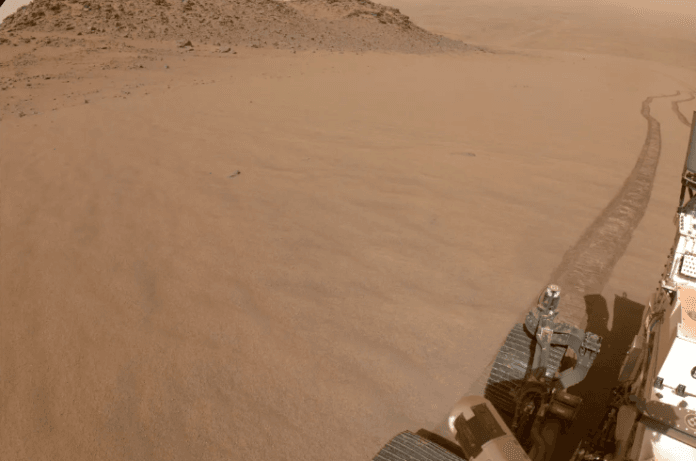Perched on the rim of Jezero Crater, NASA’s Perseverance rover now stands on the edge of a 4-billion-year-old Martian landscape, venturing into uncharted territory. This monumental climb! Completed after months of meticulous navigation. It marks a pivotal moment in humanity’s quest to understand the origins of life and the mysteries of Mars. But what lies ahead for Perseverance as it explores some of the oldest rocks in the Solar System?
“These are amongst the oldest rocks in the Solar System,” says Kenneth Farley, a geochemist and mission scientist from the California Institute of Technology. These ancient formations, located outside Jezero Crater, could hold signs of extraterrestrial life from an era when Mars was warmer, wetter, and potentially teeming with conditions conducive to life.
A Journey Through Time
Landing on Mars nearly four years ago, Perseverance has tirelessly explored Jezero Crater, a site that once hosted a sprawling lake and river delta. Over its 32-kilometer trek, the rover drilled and collected rock samples, storing 15 precious specimens in its belly and depositing 10 more in a ‘sample depot’ on the crater floor. Each sample is a window into Mars’ ancient history, waiting for the day researchers can analyze them on Earth.
However, the return of these samples presents a daunting challenge. NASA’s original plan for a retrieval mission carried an estimated cost of $11 billion, a price tag that far exceeds the agency’s current budget. Efforts are underway to devise a more affordable strategy, potentially involving smaller rockets and innovative engineering solutions. These efforts reflect a deep commitment to bringing home these invaluable relics of Mars’ past, which could unlock answers to questions that have captivated scientists for decades.
Scaling New Heights
Reaching the rim of Jezero Crater on December 11 was no small feat. The climb, which elevated Perseverance by more than 500 meters, handled 20% slopes with slippery, shifting footing brought it to Lookout Hill—a vantage point offering breathtaking views of both its past explorations and future targets. From this elevated perspective, Perseverance captured an image that vividly highlights the scale of its journey so far and the uncharted plains it now faces.
Ahead lies Witch Hazel Hill, a towering 450-meter-high rock stack that Perseverance is expected to reach within days. The layers of these rocks may reveal secrets of Mars’ geological history, potentially shedding light on ancient hydrothermal systems where hot water coursed through fractured rocks after a meteorite impact. Such environments, known to harbor life on Earth, could have similarly fostered life on Mars.
A Favorite Among Discoveries
Amid its many findings, a sample collected in July this year from a site called Cheyava Falls stands out as a top contender for astrobiological intrigue. This rock, marked by leopard-like spots with dark rims and lighter interiors, hints at an environment once ripe for microbial life. On Earth, similar patterns arise from chemical reactions that provide energy to microorganisms.
Using its onboard instruments, Perseverance identified the dark rims as iron-phosphate material and the spots as rich in organic compounds. Organic compounds, which contain carbon, can originate from both biological and non-biological processes. Yet the combination of the spotting pattern, organic compound presence, and evidence of water activity makes this sample particularly promising. “This is something we will be looking at very, very carefully for years to come,” says Meenakshi Wadhwa, NASA’s principal scientist for Mars sample return.
What Lies Ahead?
As Perseverance ventures deeper into uncharted Martian terrain, its path will depend on NASA’s evolving sample return strategy. Whether the rover retraces its steps into Jezero Crater or journeys farther onto the ancient plains, its mission remains clear: to gather and preserve Mars’ most compelling stories for future study.
Meanwhile, its companion, the tiny Ingenuity helicopter, continues to support the mission despite crashing in January. Though immobilized, it still relays weekly weather reports to Perseverance. However, as the rover moves farther from its downed ally, the two machines will soon lose contact—a poignant reminder of the isolation and perseverance required for exploration.
With each discovery, Perseverance rewrites what we know about Mars, inching closer to answering one of humanity’s oldest questions: Are we alone in the universe? Perhaps the answer lies in the ancient rocks it now explores. For scientists and dreamers alike, the journey of Perseverance is a testament to humanity’s relentless curiosity and determination to unlock the secrets of the cosmos.

